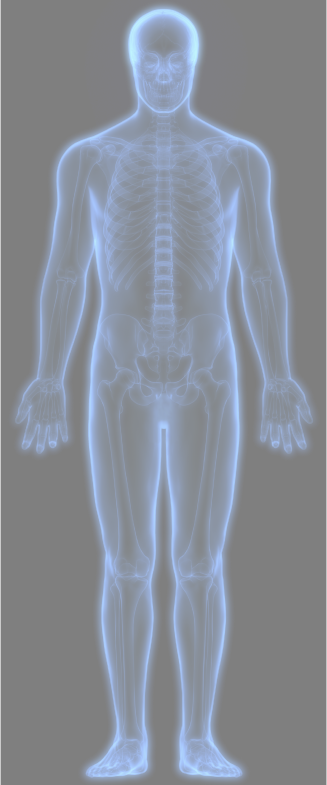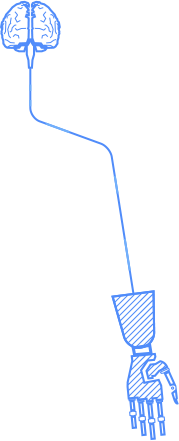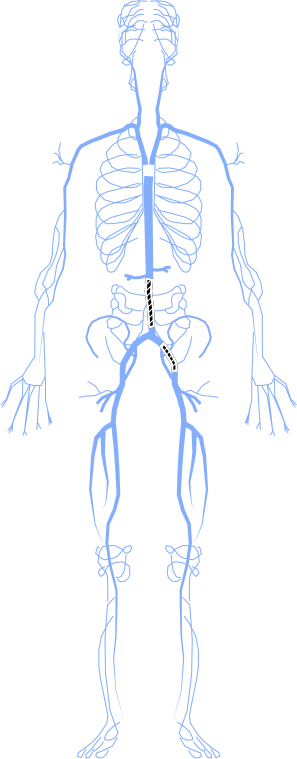From i-limbs to artificial organs, advances in technology have led to an explosion of innovation in transplantation science.
Based on advances in tech, such as 3D printing, researchers and scientists are creating human organs, as well as designing thought-controlled artificial limbs.
A number of these advances are already improving the lives of patients all over the world, but what can we expect in the future?
Hover over the circle to see the prediction and click to learn more.
Click on the circle to see the prediction
























Thought controlled robotic leg
The Bionic Medicine and the Feinberg School of Medicine are developing a thought propelled robotic leg, with sensors embedded into muscle tissue that will send electrical signals from the brain, connect the neural dots, and wirelessly transmit the signal to the foot. Previously, sensors automatically adjusted the angle of the foot during different points in its wearer’s stride. The device is set for commercial use by 2018.
SourceLab printed bones
Washington University scientists are creating a ceramic powder that can print artificial bone scaffolds, using a specially configured inkjet printer and CAD software, which dissolves as natural bone grows around it by 2022.
Sourcei-Limb Ultra
Touch Bionics' i-Limb Ultra, a prosthetic hand with motorised joints, will shape itself to an object someone is trying to grasp or read muscle signals from the skin of someone's upper arm to take on a pre-programmed configuration. Utilising its pulsing and vari-grip features, the i-limb ultra will also allow the user to increase the strength of their grip around an object.
Source3D printing of arteries and small organs
The National Intelligence Council believe that printing arteries and simple organs may be possible by 2030. Scientists have developed a way to 3D print models of various anatomical structures, including arteries and bones, and this process could be used to create 3D-printed soft implants in which living tissue can grow to form organs.
SourceArtificial kidney
By 2022, artificial kidneys will replace all the functions of the real kidneys in an implantable device, which will be about the size of a cricket ball. A series of nano drilled silicon screens filter toxins out of the blood without the need for pumps or outside power. A bioreactor filled with specially engineered kidney cells will perform other important renal functions, such as maintaining electrolyte balance.
SourceBionic lungs
Five medical teams around the world are working on bionic lung prototypes, that will do the job of natural lungs for a fixed amount of time. The University of Michigan’s prototype is the size and shape of a can and has two tubes: one is attached to the pulmonary artery and the other connects to a patient’s left atrium. It has no moving parts and instead uses a patient’s heart to pump blood in the BioLung’s chamber, where oxygen and carbon dioxide are exchanged across a plastic membrane. The oxygen-rich blood then returns to the body.
SourceBattery powered heart
Battery powered, self contained hearts, developed by SynCardia Systems, have been approved for implantation in humans by the Food and Drug Association (FDA). The heart will provide pulses of air and a small amount of vacuum so that the diaphragm is in the proper position to accept the next filling of blood into each artificial ventricle.
SourceExact replicas of the brain
By 2050, Dr Ian Pearson, a futurologist with an 85% accuracy record predicts it will be possible to create exact replicas of the human brain by a machine. The futurist explains, “Essentially you’ll be making a backup of yourself, so if one day you get run down by a bus, it doesn’t really matter, you’ve got a back-up.”
SourceThe bionic eye
With micro-optics embedded in the lens, the bionic eye will not only enhance vision, but also project data into the line of sight and restore some degree of lost vision. For macular degeneration, the incoming image can be modified to be spread over the still-functional parts of a retina. This is only the start, as U.S. firm ‘Second Sight’ predict face recognition and 3D vision will become available with planned software upgrades.
SourceExtra Senses
By 2035 it is predicted we will be able to upgrade our senses with implants that detect more signals (radio waves, X-rays, etc). Neuronal implants, small computer chips that can be inserted into the body, will interact directly with our nervous systems. The devices could be used for therapeutic purposes, helping somebody who's blind, for example, so they can detect objects as they move around ultrasonically.
SourceArtificial Pancreas
An artificial pancreas, capable of monitoring a person's blood sugar and adjusting the level of insulin to meet their body's needs is being developed by researchers from De Montford University. The implantable device will feature a gel that responds to changes in blood glucose levels. When glucose levels are too high or low, the gel enables a higher or lower rate of insulin.
SourcePerhaps futurist Ray Kurzweil was right after all when he predicted the merging of man and machine within our lifetime as part of the great Singularity.




